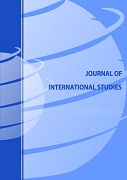WHAT DRIVES INTERNATIONAL TRADE? ROBUST ANALYSIS FOR THE EUROPEAN UNION
WHAT DRIVES INTERNATIONAL TRADE? ROBUST ANALYSIS FOR THE EUROPEAN UNION
Author(s): Krzysztof BeckSubject(s): Geography, Regional studies, Economic policy, International relations/trade, EU-Accession / EU-DEvelopment
Published by: Fundacja Centrum Badań Socjologicznych
Keywords: international trade; European Union; trade policy; economic integration; Bayesian model averaging;
Summary/Abstract: Economic literature is full of theories explaining international trade flows and empirical studies striving to verify them. Most of these attempts focus on the verification of single theory at a time without regard to the problem of model uncertainty. As a consequence, empirical research has brought a bulk of inconsistent results. The aim of the present paper is to validate which theories are correct on a purely empirical basis. To accomplish this, Bayesian model averaging was employed to 71 potential determinants of international trade for a sample of EU countries over the 1995-2015 period. The results show that the gravity model takes the lead in the explanation of trade flows. Membership in the EU has also a profound impact on trade, as each year of membership in the EU is associated with a growth rate of bilateral trade between 0.5 and 1.5. Finally, the analysis provides support to the predictions under Heckscher-Ohlin model of trade.
Journal: Journal of International Studies
- Issue Year: 13/2020
- Issue No: 3
- Page Range: 68-84
- Page Count: 17
- Language: English

